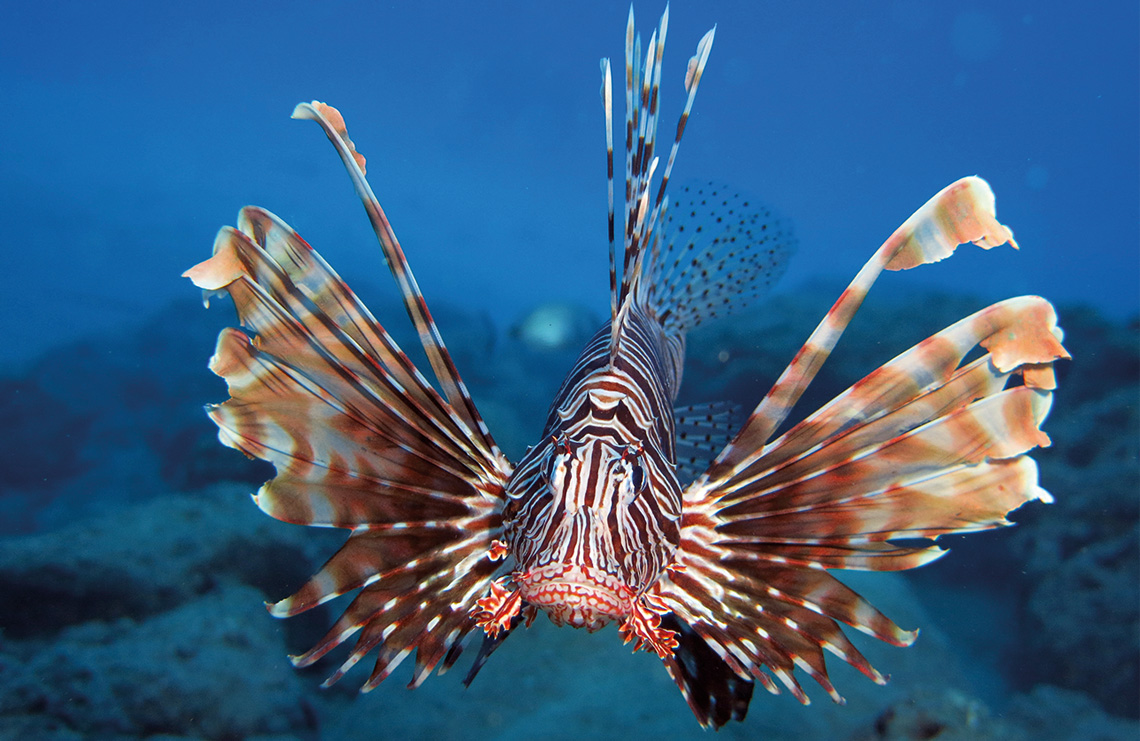The lionfish (Pterois volitans) was first found off the coast of Florida in 1985, possibly having been released into the sea by tropical pet enthusiasts. It quickly proliferated along the USA’s east coast before reaching the Gulf of Mexico and the Caribbean. In around 2020, the species managed to cross the strong current of the Amazon River mouth and in the last three years it has begun occupying areas off the coast of Pará, Piauí, Ceará, and Fernando de Noronha. “Some have already arrived in Pernambuco, from where the southerly current will likely carry the fish to the entire Brazilian coast within about a year,” predicts Marcelo Soares, a biologist from the Federal University of Ceará (UFC) and lead author of a national survey of the areas occupied by this Indo-Asian marine species. Teams from government agencies, fisherpeople, and divers captured 352 lionfish from depths of between 1 and 100 meters along 2,766 kilometers of the Brazilian coast. Researchers are calling for national programs to control lionfish populations, which have reduced populations of native species in the Caribbean by feeding on their young. Another species of lionfish (P. miles) was found in the Mediterranean Sea in 2012 and has also caused devastating effects on native fish in the region. When caught up in fishing nets, it kills any other fish that come into contact with its poisonous spines. Up to 47 centimeters long, lionfish reproduce quickly, releasing around 2 million eggs into the water per year. Its predators are large fish such as sharks, groupers, and moray eels, which are increasingly rare off the Brazilian coast (Journal of Environmental Management, April).
RepublishBiology
Devastating invasion of the Brazilian sea

Lionfish are spreading along the coast, harming fishing and the survival of native species
Yusuf Kayaoglu / Getty Images